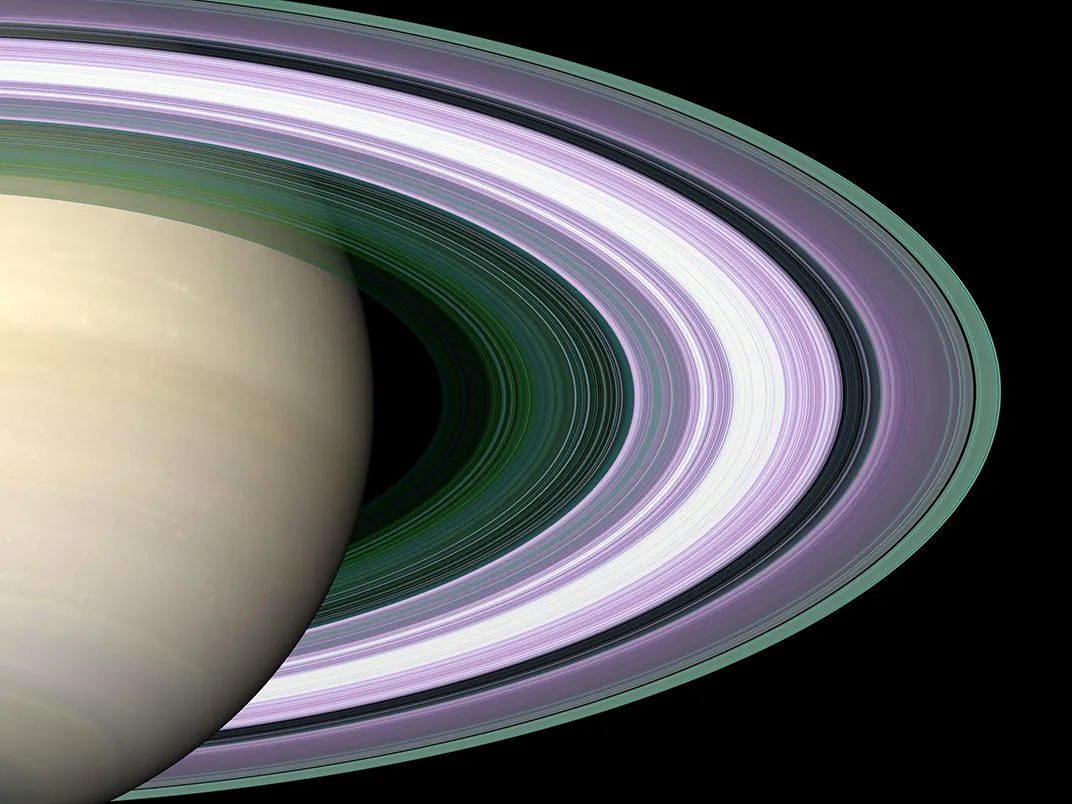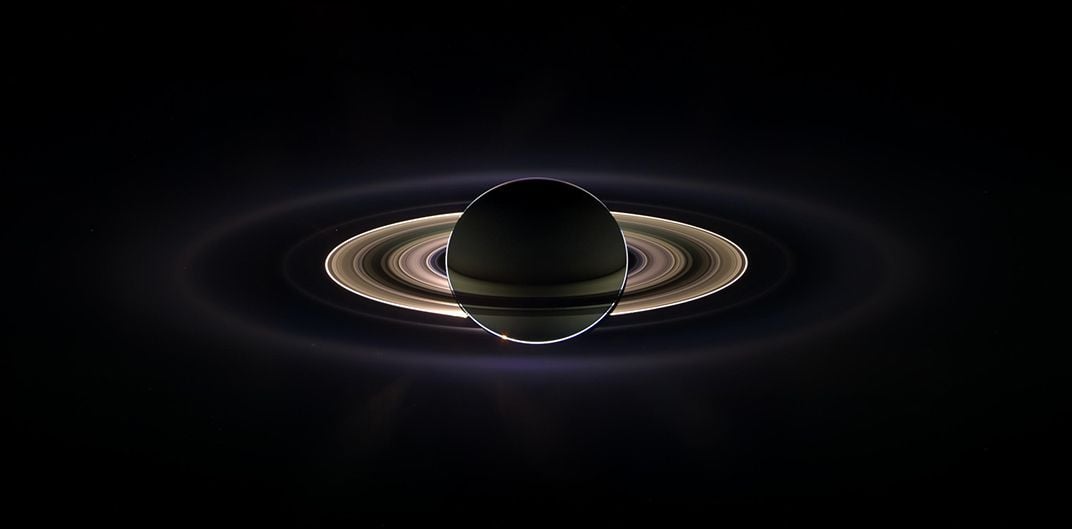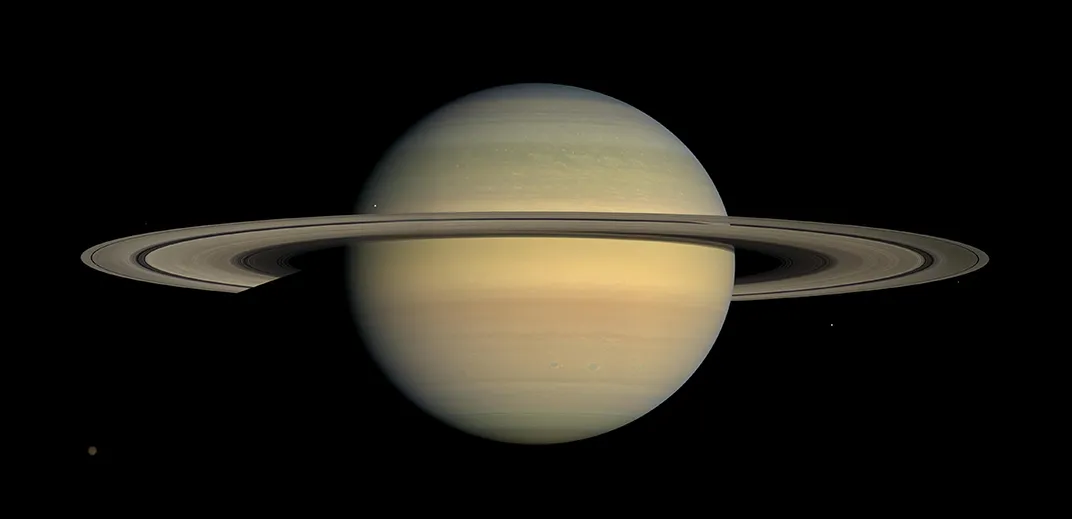Ask Smithsonian: How Many Rings Does Saturn Have?
The age, origin and purpose of Saturn’s rings have mystified scientists since the days of Galileo
Saturn’s rings are a thing of beauty. They’ve piqued the curiosity of legions of astronomers over the centuries, and yet, still very little is known about them.
How old are they? How did they get there? Do they serve any purpose? None of these questions have definitive answers. Even the number of rings varies, according to how the counting is done.
The rings were first observed in 1610 by Galileo. He and other early astronomers weren’t even sure if they were rings, because they seemed to periodically disappear—a function of the thin bands sometimes being seen edge-on. But a controlled experiment 50 years or more after Galileo’s discovery proved that they were indeed rings.
Over the next few centuries, however, not much more was learned about those rings, until the Pioneer and Voyager spacecraft conducted fly-bys of the sixth planet from the sun in the early 1980s. Knowledge has accelerated with the Cassini-Huygens mission—a cooperative project of NASA, the European Space Agency and the Italian Space Agency designed to probe every aspect of Saturn, its moons and its rings. The 4,600-pound Cassini spacecraft—one of the largest and most complex interplanetary vehicles ever built—reached Saturn in 2004, after a 7-year journey. It’s been relaying fantastic images and data ever since. Cassini was due to end in 2008, but its mission has been extended several times, and it is currently slated for death in 2017.
Why study the rings? “The rings are actually not that significant, I would say, in terms of what they can teach us,” says John Weiss, an assistant physics professor at St. Martin’s University in Lacey, Washington. “The main reason I think most of us study it is because there’s a mystery there, something we don’t understand,” adds Weiss, who did his post-doctorate work as an imaging specialist on the Cassini mission and has focused ever since on the dynamics of Saturn’s rings.
The rings may also offer clues to how planets are formed, and about orbital dynamics, he says.
The prevailing wisdom has been that the rings came into being around 100 million years ago—a true youngster compared to the 4.5 billion-year-old solar system. But in 2014, University of Colorado at Boulder scientists, armed with data from Cassini, posited that the rings were there at the start and are indeed, some 4 to 5 billion years old.
They estimated the rings' age in part by examining the ice granules that make up the bulk of them. That ice is primarily water, with a little bit of methane and carbon dioxide, says Weiss. Sometimes the ice covers some rocky material, as the particles weather over time, they lose some reflectivity. A dust layer may also build up over time. In this way, age can be estimated by reflectivity, but the Colorado research showed that even shiny, reflective particles might be old.
“I’d love the idea of these rings having always been around Saturn, but I have no other reason for that aside from aesthetics,” says Weiss. It’s not clear whether the Colorado findings will hold up over time, he adds.
So how did the particles get there? One theory is that the rings are made up of the remnants of moons shattered by meteorites. Or they may be leftover debris from a comet that broke up. Weiss says he doesn’t think there’s enough evidence to say which is most likely.
For now, astronomers count eight main rings. As they were discovered, each was assigned a letter of the alphabet (not exactly the flashiest nomenclature for such an awe-inspiring planet). But they do not appear in alphabetical order. Working outward from Saturn, the first are the C, B and A rings. The D ring is faint, and closest to the planet. The F ring is narrow and is just outside the A ring. Beyond that, are two fainter rings, G and E. There are gaps between the rings that have been named, and ringlets within the rings, which has upped the ring count into the thousands.
Overall, the rings extend about 175,000 miles out from Saturn—almost the distance between the Earth and its moon. But they vary in width and height—some are only 30 feet high.
The Cassini craft has made some interesting discoveries about the rings—including that Saturn’s moons have launched waves in the rings, and that small “propeller” objects in the rings are altering them. Astronomers are keeping a close eye on those, hoping to see how they change their orbits and what impact they might have in the future.
As Cassini winds down its mission in 2017, the engineers are plotting a path that will hopefully safely maneuver it through the rings without being destroyed by the particles, so it can take images from within the rings and the gaps. The craft will then end its life in a blaze as it hits Saturn’s atmosphere—if it makes it that far.
“So as it goes down, it will go down with a swan song,” says Weiss, who professed a certain sadness to be contemplating the spacecraft’s demise.
It's your turn to Ask Smithsonian.
/https://tf-cmsv2-smithsonianmag-media.s3.amazonaws.com/accounts/headshot/AliciaAult_1.png)



/https://tf-cmsv2-smithsonianmag-media.s3.amazonaws.com/accounts/headshot/AliciaAult_1.png)